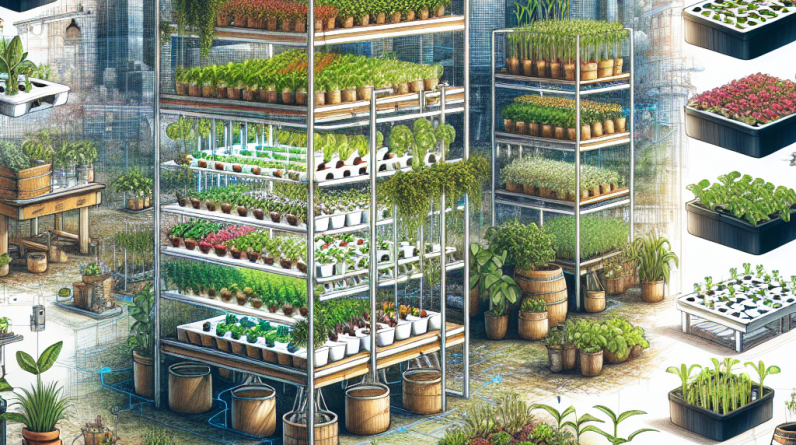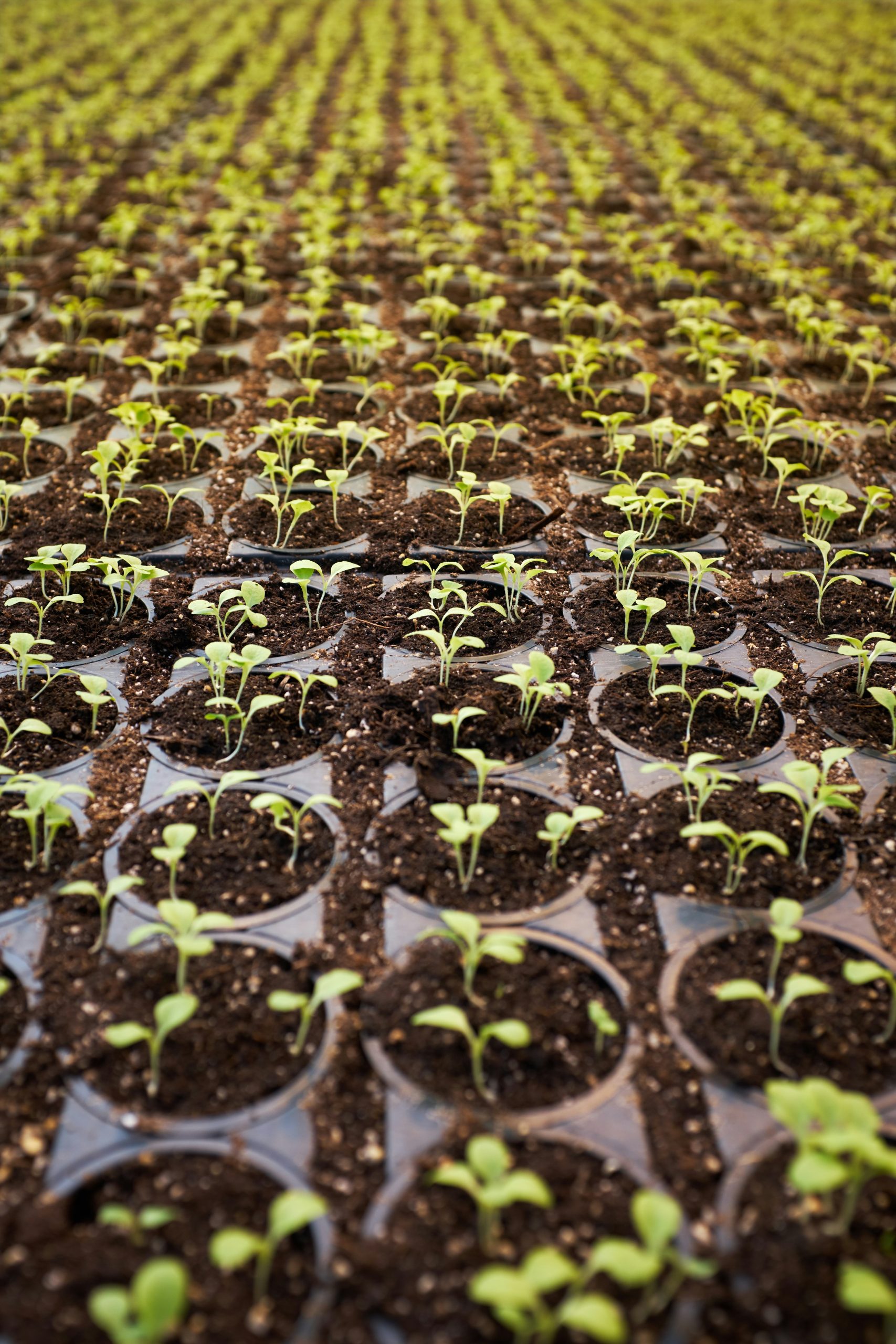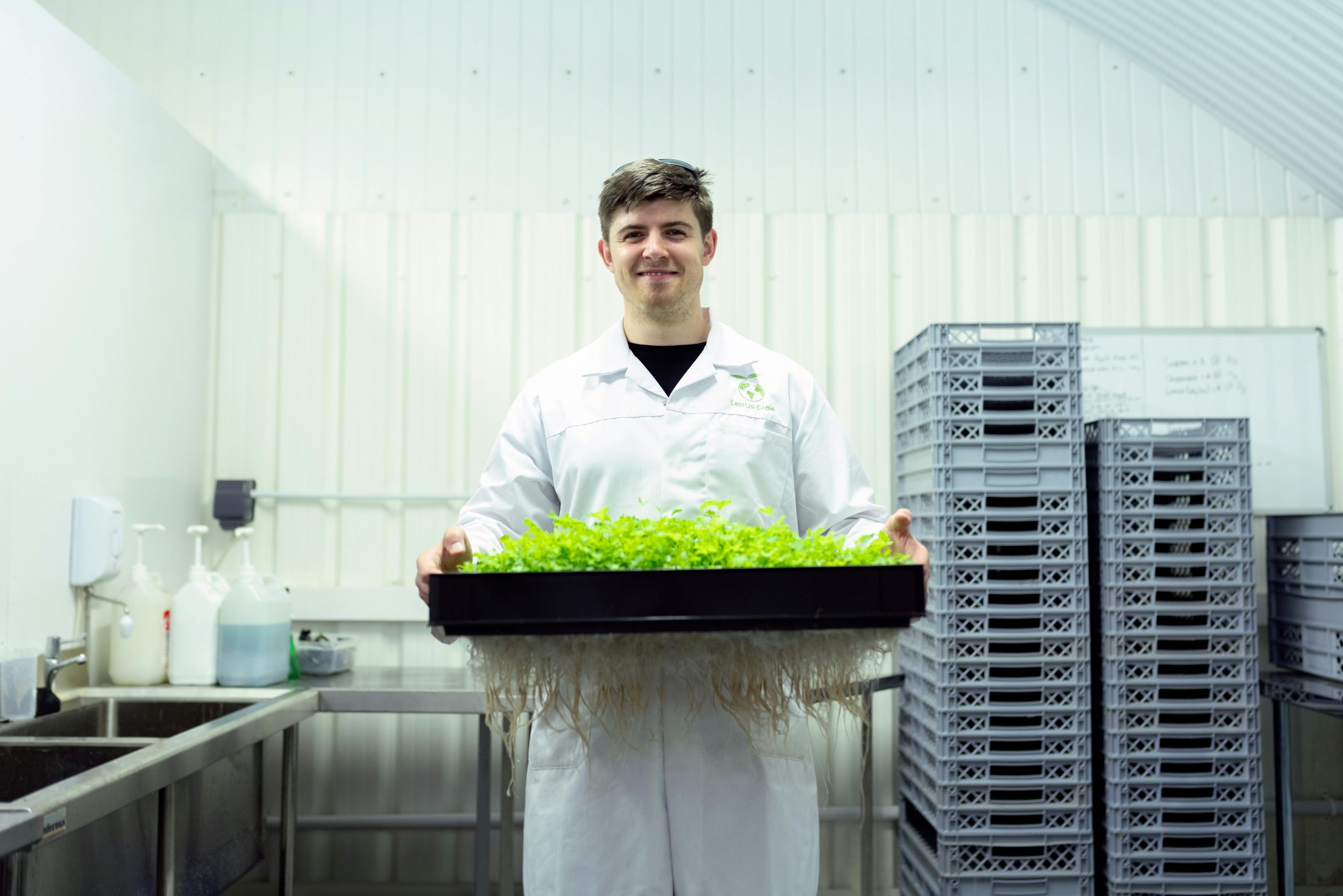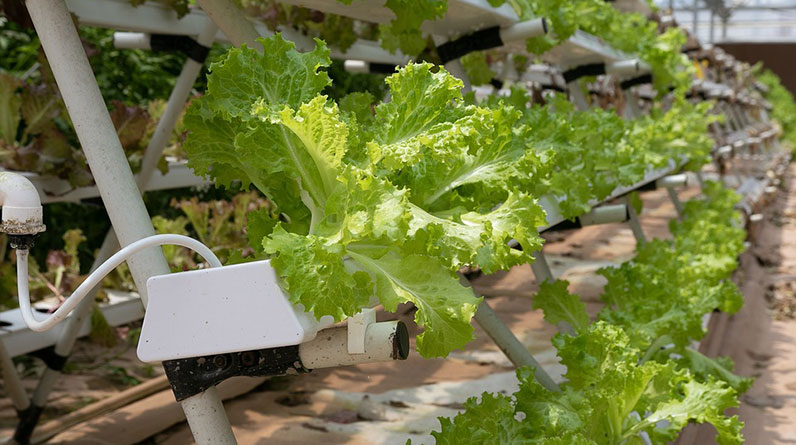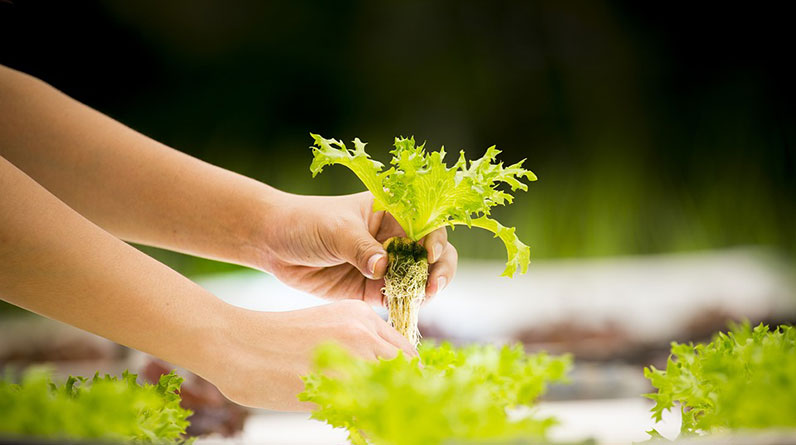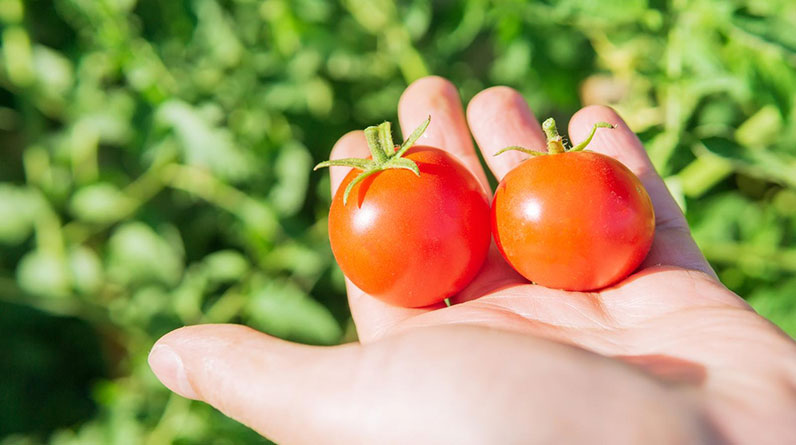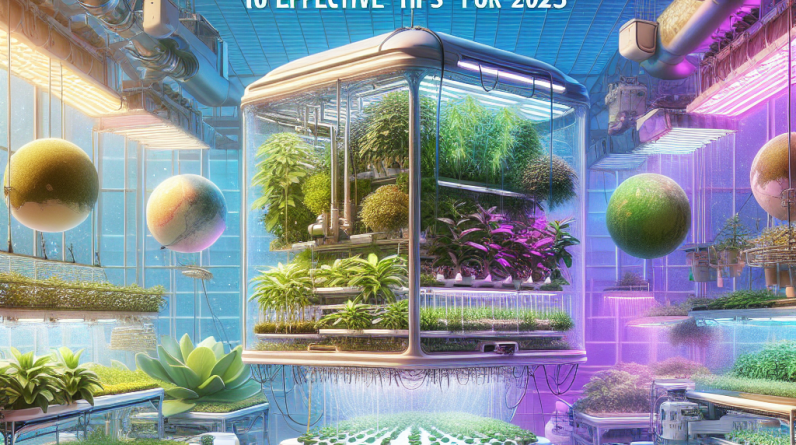
- 1. Choosing the Right Hydroponic System
- 2. Lighting Optimization for Indoor Hydroponics
- 3. Nutrient Management and Fertilization
- 4. Maintaining Water Quality and pH Levels
- 5. Monitoring and Controlling the Environment
- 6. Pest and Disease Prevention
- 7. Selecting the Best Crops for Indoor Hydroponics
- 8. Automation and Smart Technology
- 9. Regular Maintenance and Diagnostics
- 10. Following Indoor Hydroponics Trends for 2025
1. Choosing the Right Hydroponic System
Understanding Different Hydroponic Setups
When starting with indoor hydroponics, selecting the right system is crucial. There are several popular options, such as Nutrient Film Technique (NFT), Deep Water Culture (DWC), and Ebb and Flow systems. Each has unique advantages suited for different types of crops and space constraints. For example, DWC is ideal for leafy greens thanks to its consistent nutrient delivery and oxygenation.
As of 2025, hybrid systems that combine features of multiple setups are gaining popularity, offering improved flexibility and yield. Evaluating factors like available space, budget, and the crops you want to grow will help you determine the best fit. Remember, your choice impacts your success and overall growth experience.
Don’t forget to consider scalability so you can expand once you gain confidence in your system. For beginners, starting small with grow trays or simpler setups can make learning easier and reduce initial costs. With the right system, indoor hydroponics becomes a sustainable and rewarding hobby or business.
Factors to Consider When Choosing a System
Key factors include ease of maintenance, system durability, and compatibility with your indoor environment. For example, a recirculating system minimizes water use but requires precise monitoring. If your space is limited, compact NFT or vertical systems maximize efficiency.
Economics also matterâsome systems require higher upfront investments but offer better long-term yields. Researching current market options in 2025 helps you select a system that matches your skill level and goals. Overall, a good fit simplifies daily care and boosts your success rate.
Make sure to gather detailed information and reviews. Connecting with indoor hydroponics communities online can provide insights and real-world feedback. Proper system selection sets the stage for an excellent indoor farming experience.
2. Lighting Optimization for Indoor Hydroponics
Choosing the Right Grow Lights
Proper lighting is the backbone of successful indoor hydroponics in 2025. Full-spectrum LED grow lights are now the standard due to their energy efficiency and customizable spectrums. They simulate sunlight effectively, promoting healthy plant growth and higher yields.
Different crops require different light intensities and durations. Leafy greens might need 12-16 hours of light daily, whereas fruiting plants like tomatoes need a minimum of 16 hours. Investing in adjustable lights ensures you can tailor the environment to each crop.
Additionally, using a light timer simplifies managing photoperiods, which is essential for flowering and fruiting stages. Modern smart grow lights can connect to appsâmaking it easier to schedule and tweak your lighting setup remotely.
Positioning and Light Distance Tips
Correct placement of lights affects plant health and productivity. Generally, LED lights should be positioned 12-24 inches above the canopy, depending on their wattage and plant growth stage. Too close can cause leaf burn; too far reduces light efficiency.
Regularly monitor plant response and adjust the height as needed. Using reflective materials like Mylar or white walls enhances light distribution. This ensures even coverage and maximizes your indoor hydroponics system’s output in 2025.
Keep in mind that seasonal changes and plant height growth require adjustments. Investing in adjustable mounts or hanging systems can save you time and effort, ensuring your plants receive optimal light at all times.
3. Nutrient Management and Fertilization
Essential Nutrients for Indoor Crops
In 2025, understanding plant nutrition is vital for successful indoor hydroponics. Plants primarily require macronutrients like nitrogen, phosphorus, and potassium, along with micronutrients such as magnesium, calcium, and trace elements. A balanced nutrient solution ensures vigorous growth and abundant yields.
Many commercial nutrient mixes are tailored for specific plant types, from leafy greens to fruiting plants. Regularly testing your water and adjusting nutrient concentrations prevent deficiencies or toxicities that could hinder plant health.
Utilizing digital nutrient monitors or kits simplifies this process. As indoor hydroponics becomes more popular in 2025, monitoring and customizing nutrient blends can significantly improve your harvest quality and taste.
Applying Fertilizer Effectively
Consistent fertilization schedules are key, especially when plants are in different growth stages. Incorporate feedings at specific intervalsâoften every couple of daysâusing the manufacturerâs recommended concentrations.
Over-fertilizing can cause root burn and algae growth, while under-fertilizing leads to poor growth. Observe your plants for signs like chlorosis or stunted growth, and adjust accordingly. Also, consider organic options like compost teas for healthier, more sustainable practices.
Remember, in 2025, precision fertilization through automation tools can help optimize nutrient delivery, reducing waste and ensuring healthy plants in your indoor hydroponic system.
4. Maintaining Water Quality and pH Levels
Importance of Water Quality
High-quality water is fundamental for thriving indoor hydroponics. Contaminants, excess minerals, or imbalanced pH can inhibit nutrient uptake and cause plant stress. Regularly testing water sources and using filters, if necessary, ensures optimal conditions.
In 2025, many growers opt for reverse osmosis (RO) units or deionized water to eliminate impurities. Maintaining clean reservoirs and replacing water periodically prevents buildup that could harm your crops.
Good water quality also reduces disease incidence and promotes faster growth. Keep records of your water tests to track improvements and maintain consistency as your indoor hydroponics garden evolves.
Managing pH for Healthy Growth
PH levels influence nutrient availability; most hydroponic plants thrive between 5.5 and 6.5. Testing your water regularly, at least weekly, is essential to avoid nutrient lockout or deficiencies.
Adjust pH using safe solutionsâeither acids or basesâbased on test results. Automated pH controllers are increasingly popular in 2025, making precise adjustments easier. Maintaining stable pH levels ensures plants optimize nutrient absorption.
Remember, fluctuations disrupt growth, so consistent pH monitoring and adjustment are your best tools for a healthy indoor hydroponic setup.
5. Monitoring and Controlling the Environment
Temperature and Humidity
Indoor hydroponics success depends heavily on controlled environmental conditions. Ideally, keep temperatures between 65-75°F (18-24°C) for most crops. Higher temperatures speed up growth but may cause stress or dehydration if humidity is not managed.
Maintaining humidity around 50-70% prevents issues like mold or root rot. Using humidifiers or dehumidifiers helps regulate moisture levels accurately. Smart sensors in 2025 can monitor these parameters and automatically adjust climate control systems.
Consistent environment control results in healthier plants, faster growth, and higher yields. Investing in reliable climate management technology pays off in your indoor hydroponics venture.
Ventilation and Air Circulation
Proper airflow reduces disease risk, manages heat, and ensures oxygen reaches your plant roots. Use oscillating fans to promote circulation and prevent stagnant pockets of air. Good ventilation also helps control humidity and temperature peaks.
Automated ventilation systems linked with environmental sensors provide real-time adjustments, optimizing conditions with minimal effort. In 2025, integrating these systems into your indoor hydroponics setup is a smart move to achieve consistent results.
Ensure your grow area has ample fresh air exchange without creating drafts that stress your plants. Proper environment control is crucial for a thriving indoor hydroponics garden.
6. Pest and Disease Prevention
Integrated Pest Management (IPM) Strategies
Preventing pests in indoor hydroponics involves proactive measures. Use physical barriers, like mesh screens, and keep your grow area clean. Regular inspections help catch problems earlyâsaving your plants from infestations.
In 2025, biological controls, such as beneficial insects or microbial solutions, are safer and more effective than chemical pesticides. These methods protect your crops while maintaining a healthy environment.
Adopting IPM practices reduces the risk of pests and diseases, ensuring your indoor hydroponics produces quality, safe produce consistently.
Recognizing Common Diseases
Fungal infections like powdery mildew and root rot are common in indoor setups if humidity or water quality is poorly managed. Early detection, aided by regular monitoring, is key to preventing spread.
Maintaining optimal pH, proper air circulation, and sanitation are your best defenses. In 2025, new diagnostic tools allow for rapid disease detection and treatment, minimizing crop losses.
Keep your grow area dry, and remove any infected plant material promptly. These practices are essential parts of managing indoor hydroponics healthily and effectively.
7. Selecting the Best Crops for Indoor Hydroponics
Popular Crops for Indoor Hydroponics in 2025
In 2025, certain crops dominate indoor hydroponics due to their fast growth, high yield, and market demand. Leafy greens like lettuce, spinach, and kale are ideal for beginners because they mature quickly and require minimal space.
Herbs such as basil, mint, and cilantro also thrive indoors, adding fresh flavor to meals. Fruit-bearing plants like cherry tomatoes, strawberries, and peppers can be successfully grown if you have the right setup and lighting.
Choosing the right crops depends on your goals, space, and resources. Diversifying your plant selection can make your indoor hydroponics garden more resilient and profitable.
Considering Crop Growth Cycles and Space
Understanding growth cycles helps in planning your indoor hydroponics layout. Quick-growing crops provide faster harvests, while longer cycles might require more planning for continuity. Space-efficient vertical systems maximize your yield in limited areas.
Experimenting with different crops allows you to learn what works best in your environment. As you gain experience, scaling up with different varieties becomes easier, opening doors to new culinary or commercial opportunities.
Always stay updated on crop varieties optimized for indoor hydroponics in 2025, so your garden stays fresh and productive throughout the year.
8. Automation and Smart Technology
Using Automation Tools for Better Results
Automation in 2025 makes indoor hydroponics easier and more efficient. Automated watering, nutrient dosing, and lighting control systems help maintain optimal conditions with minimal manual intervention. This is especially useful for busy growers or those managing larger setups.
Smart sensors can monitor water pH, temperature, humidity, and nutrient levels, alerting you to issues before they affect plant health. Integrating these tools with smartphone apps provides real-time insights and remote control capabilities.
Automation reduces mistakes, conserves resources, and overall enhances productivity, making your indoor hydroponics system more successful and sustainable.
Future Trends in Indoor Hydroponics Technology
The adoption of AI-driven systems and machine learning algorithms continues to grow. These innovations optimize environmental and nutrient conditions dynamically, based on plant responses. In 2025, such technologies are becoming more affordable and accessible for hobbyists and commercial growers alike.
Additionally, closed-loop systems that recycle water and nutrients further reduce waste and improve sustainability. These advancements make indoor hydroponics an even more attractive option for urban farming and sustainable food production.
Staying informed about emerging tech ensures you stay ahead in the indoor hydroponics game.
9. Regular Maintenance and Diagnostics
Routine Checks for a Healthy System
Consistent maintenance prevents most issues in indoor hydroponics. Regularly inspect components like pumps, lights, and reservoirs. Clean or replace filters and check for algae or mold growth.
Implement a maintenance scheduleâweekly or biweeklyâthat includes water testing, system sanitization, and observing plant health. Using troubleshooting charts can help identify problems early, saving time and resources.
Documenting your maintenance routine helps track the system’s performance and ensures nothing gets overlooked, especially important as your setup expands in 2025.
Using Diagnostic Tools for Troubleshooting
In 2025, advanced diagnostic tools such as digital microscopes and sensor-based diagnostics improve problem detection. Quick identification of root causes like nutrient imbalances or pests minimizes crop damage.
Learn to interpret data from your sensors and tools, enabling proactive adjustments. This knowledge reduces crop failures and improves overall yield quality.
Adopting these diagnostic techniques turns maintenance from reactive to proactive, boosting your success in indoor hydroponics.
10. Following Indoor Hydroponics Trends for 2025
Innovations to Watch
The indoor hydroponics landscape in 2025 is constantly evolving with innovations like LED lighting breakthroughs, AI-powered environmental controls, and sustainable water recycling systems. Staying updated ensures you leverage the latest tools and techniques to maximize your crop output.
Active involvement in online communities, subscribing to industry publications, and attending expos can keep you ahead of trends. Experimenting with emerging technologies like automated seeders or modular systems can give you competitive advantages.
Adapting to trends makes indoor hydroponics more efficient, productive, and sustainable, opening new doors for hobbyists and commercial growers alike.
Resources for Staying Updated
Make use of online forums, webinars, and social media groups dedicated to indoor hydroponics. Many experts share tips and success stories that can inspire your projects. In 2025, dedicate time weekly to research and network for continuous growth.
Partnering with local agricultural tech suppliers or universities can


